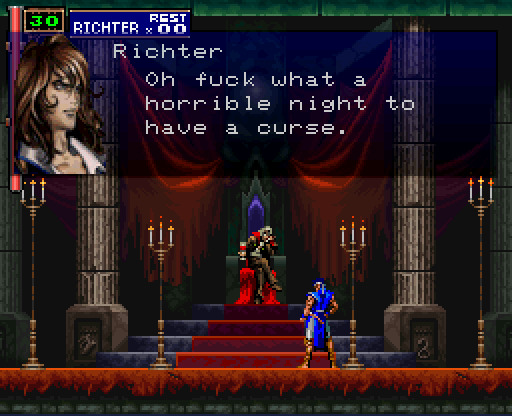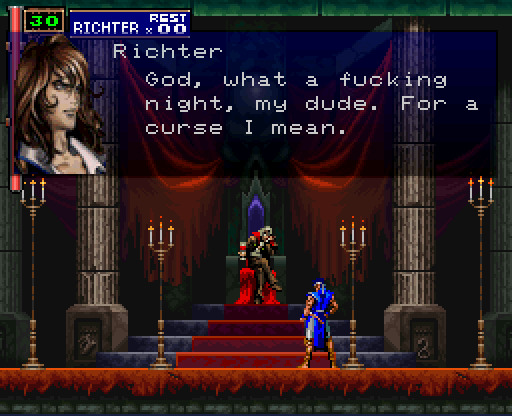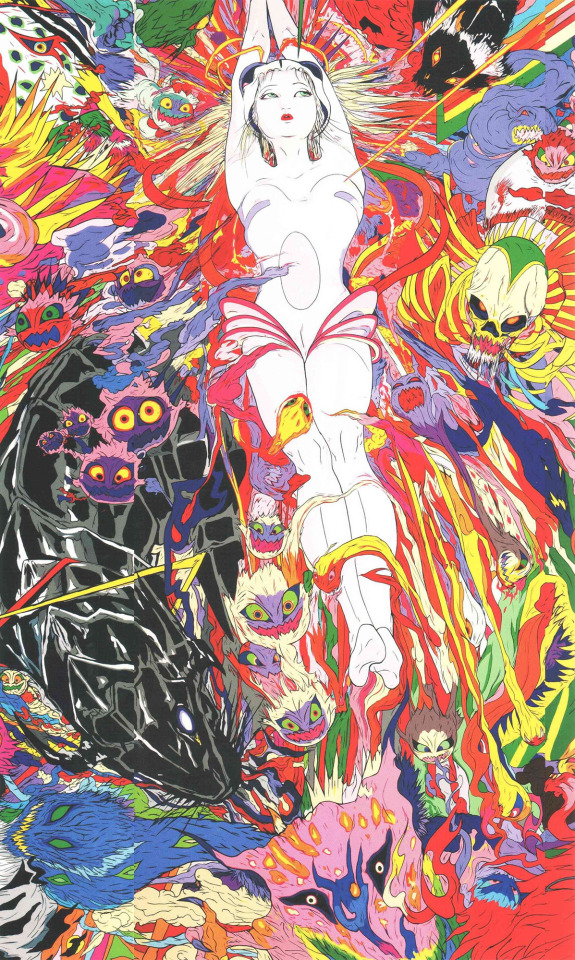Text

We have a release date for Madou Monogatari 4. It's not exact, but it's going to come out in Summer of 2024. Could be somewhere between June to late August!
No idea if this is gonna be released to the west, I mean, Compile Heart/Idea Fuck is known to release to the west but SEGA might fight them on it.
59 notes
·
View notes
Text
Carmine in places where he 100% should be
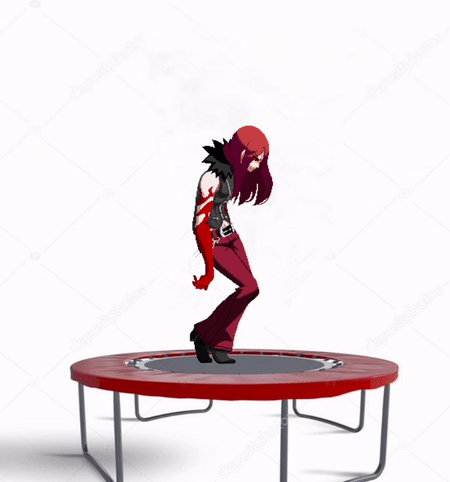
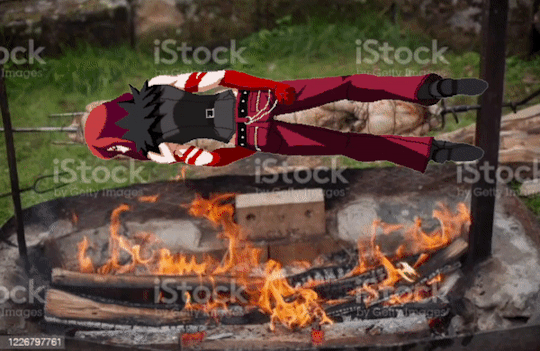


(sprites for the gifs taken from here)
262 notes
·
View notes
Text
RSGC0015 - Release Your Old Games, Japan!
I love Japanese video games. They're the reason why, even though I'm in my late 30s, I'm still utterly captivated by the medium. Through rigorous refinement, Japanese game makers helped shape the industry as we know it today. As a result, they have left a lasting impression, a legacy, in the hearts and minds of fans worldwide.
But, for quite some time, it felt as if these companies didn't understand this impact, as they've let some of their lesser known works slip between the cracks. This can be due matters of licensing or other litigious obstacles. Other times its a lack of interest from the mainstream; a poor reception. But more often then not, simply, someone "fumbled the bag" so to speak.
Let's discuss.
Chapter I: Namco X Not Releasing A Bunch of Their Old Games
When Bandai Namco released their most recent Museum compilation for the Nintendo Switch it was surprisingly threadbare; it was just 12 games. Twelve. Of course, it included Pac-Man - the game that made them a household name in the 1980s - and other staples such as Dig Dug and Galaga. They're undisputed classics, sure, no argument there. Deep cuts, however, they are not.
Namco's catalog has dozens of fantastic games, most of which would remained elusive if I didn't dive deep into retro gaming (and, by extension, collecting). One example of these is 1985's Baraduke, a 2D shooter with lite maze-runner gameplay. It's pretty rad, but somewhat under-the-radar these days. What if you want to play it right now, on real hardware?
Unless you own a prohibitively expensive Sharp X68000 computer along with the sole port of the game; an arcade PCB; or a copy of Namco Museum Vol. 5 for Playstation, it's highly unlikely you're going to be flying through rooms, blasting Octies any time soon. Out of the aforementioned options, the most feasible one is buying Namco Museum Vol. 5. Again, this is to play the game through legal means.
This was, in fact, the main inspiration for this post. There were 8 or so Namco compilations for the PS1. Why is the most extensive collection of Namco classics locked on an almost 30 year old console? Does Namco not value their older IPs? Do they think we just want Pac-man, Dig Dug and Galaga for our shiny current-gen game boxes and to Hell with obscure titles like Youkai Douchūki (aka Shadow Lands)? Or what about the esoteric hack-n-slash Genpei Tōmaden (aka The Genji and Hieke Clans)? Certainly everything that's been previously available (and then some) can fit on a Blu-ray disc or a Switch cartridge, no? Its frustrating, as someone chomping at the bit to own and experience such things. Sadly, Namco is not alone in this regard.
*EDIT (this is old lol) I started writing (and now rewriting) this post about month before the announcement of the Namcot Archive (a collection of Famicom Namco games) for the Switch. It's a neat set but my point, for the most part, still stands.*
Chapter II: The Virtual Console was Disappointing.
Nintendo needs no introduction. Their name is synonymous with video games, built on the fact that they dominated the home console market in the mid-1980s with their Family Computer (aka Famicom) in Japan. A few years later they expanded Westward with the Nintendo Entertainment System (NES) to similar acclaim. While they didn't quite hold the same market share they secured in the 80s into the 90s and beyond, Nintendo still shaped generations with their games.
With Nintendo's fifth console, the Wii, they entered the realm of online game distribution. It was called the Virtual Console and it debuted in November of 2006, with it coming to the 3DS in 2011 and the Wii U in 2013. At launch, NES, SNES, Nintendo 64 and Sega Genesis games were available with Turbografx-16 following a few days later.
Eventually, the service would offer western gamers titles that never got released outside of Japan. The first of these was Sin & Punishment for the Nintendo 64, an on-rails shooting game from Treasure. The most notable instance of this, however, was Konami's Akumajō Dracula X: Chi no Rondo (aka Castlevania: Rondo of Blood), a highly sought after title. At the time, it must have been incredible to finally play this without the need to purchase a costly secondhand copy of the disc or an expensive PC-Engine CD Turbo Duo console.
VC had its drawbacks, though. Most notably that when the service had come to other platforms, users were unable to transfer their purchases as the Wii, 3DS and Wii U eShops were separate entities. This lead to customers paying fees to re-download their titles or having to outright buy them again. This was, for lack of a better term, shitty on Nintendo's part. The lack of a universal pricing model, for what were essentially ROMs, didn't help either.
The 3DS and Wii U eShops also offered less games, 184 and 267 respectively, than the original VC's 398.
Between the slow-drip of re-rereleases at launch and anti-consumer practices, VC ultimately squandered its good will and potential.
Chapter III: Sega Does What Ninten-does, Too?
If there's one thing that Nintendo and one-time rival Sega have in common is that, like clockwork, they churn out the same classic titles over and over again. We saw this when the Virtual Console came to the Wii U and were hooked into the slow-drip of Mario Bros. 3, some random black box game, or a re-release of a third-party offering.
Sega is no better. I own Genesis compilations across at least 3 console generations. Their game lists are nearly identical. Golden Axe. Ristar. Phantasy Star II. I can go on. All are fantastic games in their own right, no doubt. I'm a fan. But like so many other Japanese game companies, they’re holding out on us. Yes, many will be placated with the likes of the current-gen Sega Genesis Collection's value (53 games for less than $50) but, I don't know, I can only attempt to play through Comix Zone and Phantasy Star III so many times; I'm sure many others share in this frustration.
A bright spot in Sega's history, however, was the Sega Ages line. The project started off as 3D budget (¥2500 at retail) remakes of their biggest hits that, thankfully, evolved into a series of definitive collections. This was due in part to the work of M2, a company who's MO is masterfully porting older games to modern consoles. Case in point, their 3DS Sega Ages port of Outrun was, at the time of its release, the best way to experience it. Again, as with Namco Museum, the bulk of the Sega Ages line is locked to the Japanese PlayStation 2 library. To further exacerbate this issue, most of later releases have started to become expensive on the secondhand market and Japanese auction sites. Bummer.
Conclusion
It's not all doom and gloom. Publishers like Johnny Turbo's Arcade are keeping classic Data East games alive and, more importantly, available. Price wise, it's pretty fair too. For example, less than $10 USD nets you a download of Night Slashers, a 3-player horror-themed arcade-only beat-em-up from almost 30 years ago. While, no, it isn't the pinnacle of the its respective genre, I absolutely welcome its availability with arms wide open.
We also need to acknowledge the efforts of Hamster Corporation's Arcade Archive. Through them, we have whole bunch of Neo Geo games (well, except for Tengai Makyō Shinden aka Far East of Eden: Kabuki Klash but that's more a Konami problem) and most then arcade-only obscurities available for download on every console, mobile and PC marketplace. It's wonderful time to be alive unless of course you love Tengai Makyō-flavored Samurai Shodown clones, I guess. Hopefully, that'll change soon.
3 notes
·
View notes
Photo









Image boards of the cancelled PC-FX version of Tengai Makyou III drawn by Tatsuyuki Tanaka.
56 notes
·
View notes
Video
youtube
Turns out that the 1992 Japanese RPG Tengai Makyou II, which was a huge title for the PC Engine in Japan and was one of the most expensive video games ever made at that point in time, had a television drama created about the game’s development. The 2 hour special called 運命の逆転, something like “Reversal of Fate”, aired on Japanese TV a month after Tengai Makyou II’s release on April 10th and seems to focus on a group of fictional characters that worked on the game, who are loosely based off actual people that created Tengai Makyou.
You can read about the drama on this Japanese PC Engine fansite which is also responsible for uploading a recording of the show on YouTube (Part 1 is above and Part 2 is available here). It is really bizarre and kind of reminds me of The Wizard since it is mainly a human drama story with video games serving as a backdrop to the narrative.
10 notes
·
View notes
Photo
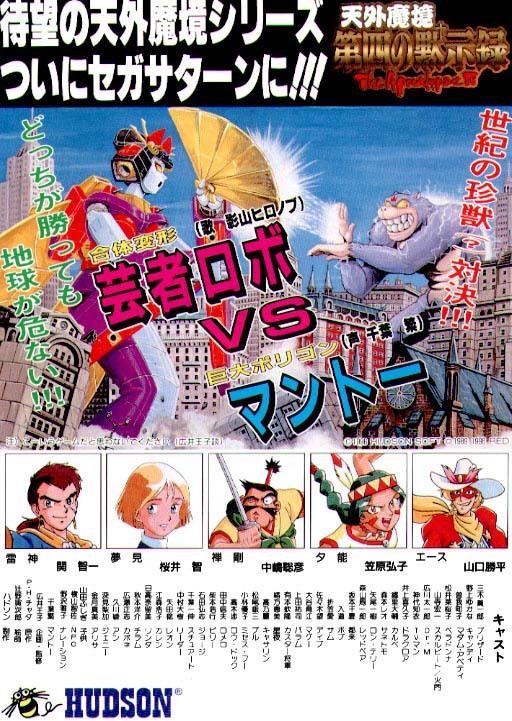
This is a rare advertisement for Tengai Makyou: The Apocalypse IV that was designed to look like an old movie poster. The ad was only seen on the back of posters for a play staring Shigeru Chiba, an actor who also voices Manto in the Tengai Makyou franchise.
133 notes
·
View notes
Photo

Japanese cover art for the 1993 Jaleco title:
Rushing Beat Shura / The Peace Keepers / ラッシング・ビート 修羅
Art by Jaleco (artist name unknown)
Sadly not released in PAL and the North American version was heavily altered. This is a cracking scrolling beat’em up for Super Famicom and the third and final entry in the series.
Follow Randomised Gaming on Tumblr, for video game, art, reviews, features, videos and more. You can also follow us on twitter and subscribe to us on YouTube for even more Randomised Gaming content
152 notes
·
View notes
Text
Wonder Boy & Asha in OUTRUN WORLD!
Tumblr friendly version:

I wanted to take the drawing on the back of the Hardcore Gaming 101: Sega Arcade Classics vol. 1 book (get a copy now!) and turn it into a full illustration. Also, the lovely “Wonder Boy & Asha in OUTRUN WORLD” logo was made by Ashura. Man, I wish this game existed.
Also the Tera Drive is the super computer at the bottom of Sega HQ in Segagaga, hoho. I guess this is a 2 Mega-Terabyte cart or MTD-Rom disc.
371 notes
·
View notes
Text
RSGC014 - Socials, Holy Grails, etc.
I now have a Twitch account that I semi-regularly stream from; its www.twitch.tv/red_spectra. The streaming setup isn’t perfect yet, but I’m getting there. Slowly, but still getting there. It’s, as you may have guessed, retro centric.
On the retro collecting front, I got one of my holy grails this summer: Magic Knight Rayearth for the Saturn. The manual wasn’t in the best shape but, it didn’t deter me from getting it. The sweetest part was that my girlfriend offered to put up half (it would count as an early birthday present) and, yeah, because of that I have a game I’ve wanted since 1998 in my collection.
No other big updates other than I really got the podcast No More Whoppers (http://nomorewhoppers.tumblr.com). One of the hosts is Ray Barnholt, who has been a regular guest on Retronauts (https://retronauts.com). I’d always chuckle when he’d promote No More Whoppers (or NoMoWo for short) and thought maybe it’s time to check it out for myself.
NoMoWo also put me on to Ray’s magazine, Scroll (http://scroll.vg), which I am enjoying immensely. I started with the MSX issue, which is kind of making me regret not buying this Panasonic A1 MSX2 I found for cheap but that’s a story for another time.
#no more whoppers#rsgc#red spectra game corner#blog#magic knight rayearth#sega saturn#retrogaming#retronauts
0 notes
Text
RSGC013 - Update?
Wow.
So it’s safe to say that I forgot about this blog. Lol. What’s been going on? Went to some dope cons (Portland Retro in Oct. 2017, Brooklyn Geek Fest in April 2018 & TooManyGames in June 2018), met up with some Instagram peeps and started (sort of?) streaming retro games on Twitch (user name is red_spectra, BTW) Maybe I’ll get back into posting here. Even though no one reads this :’(
0 notes
Photo








“If you ever discover that what you’re playing is a game within a game, just slow down, take a deep breath, and hold on for the ride of your life.” - Jack Handey (paraphrased)
Game manual covers from Retro Game Challenge
472 notes
·
View notes
